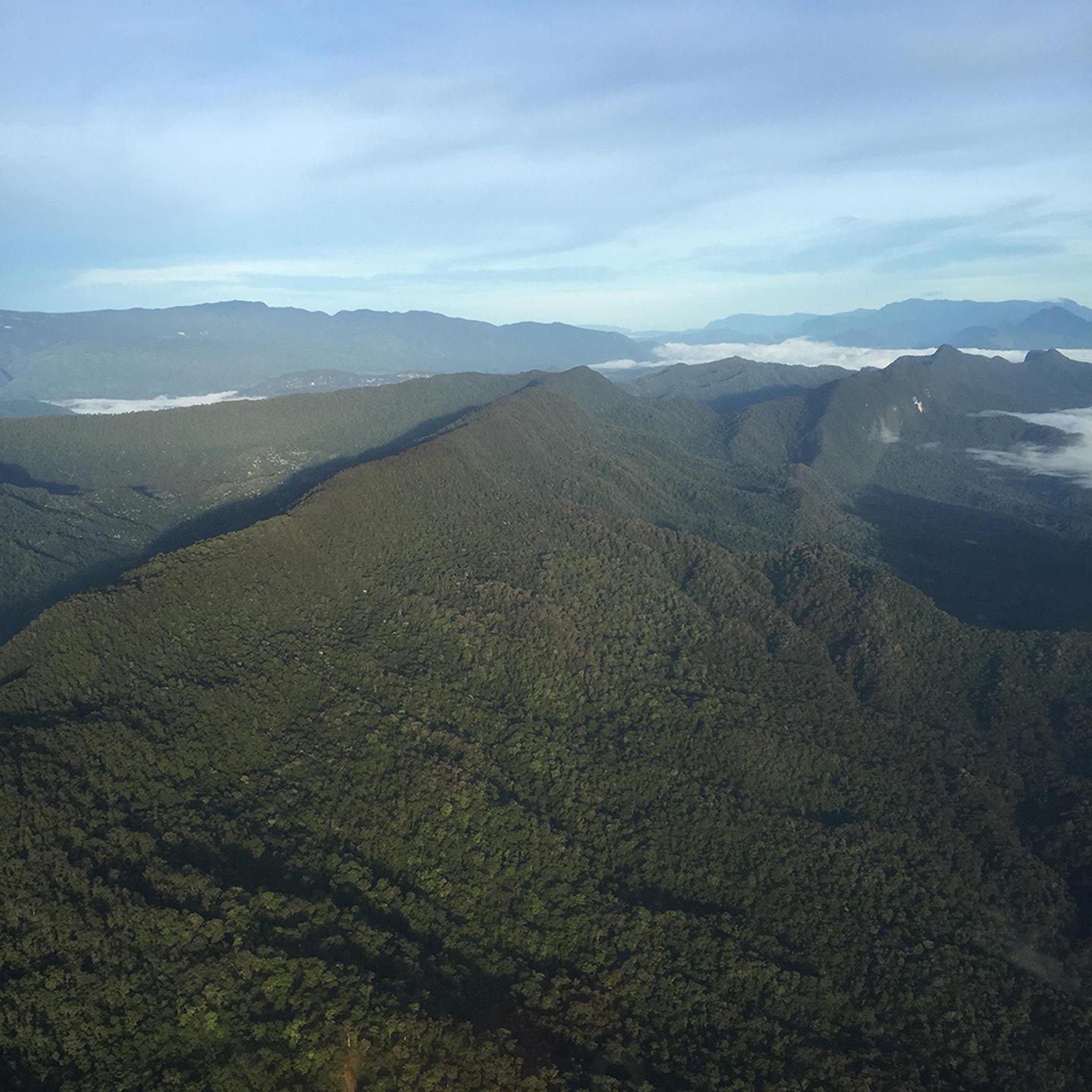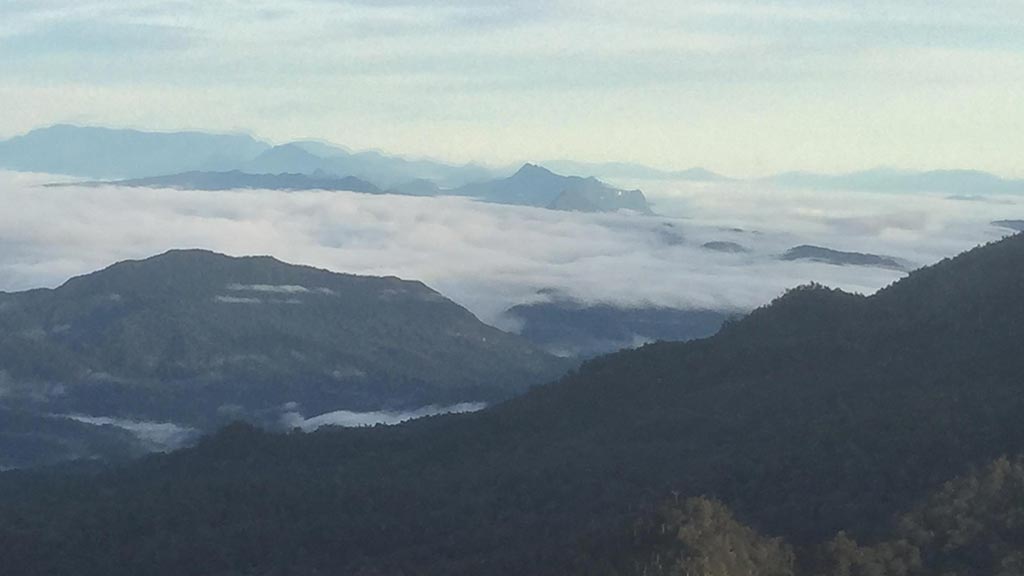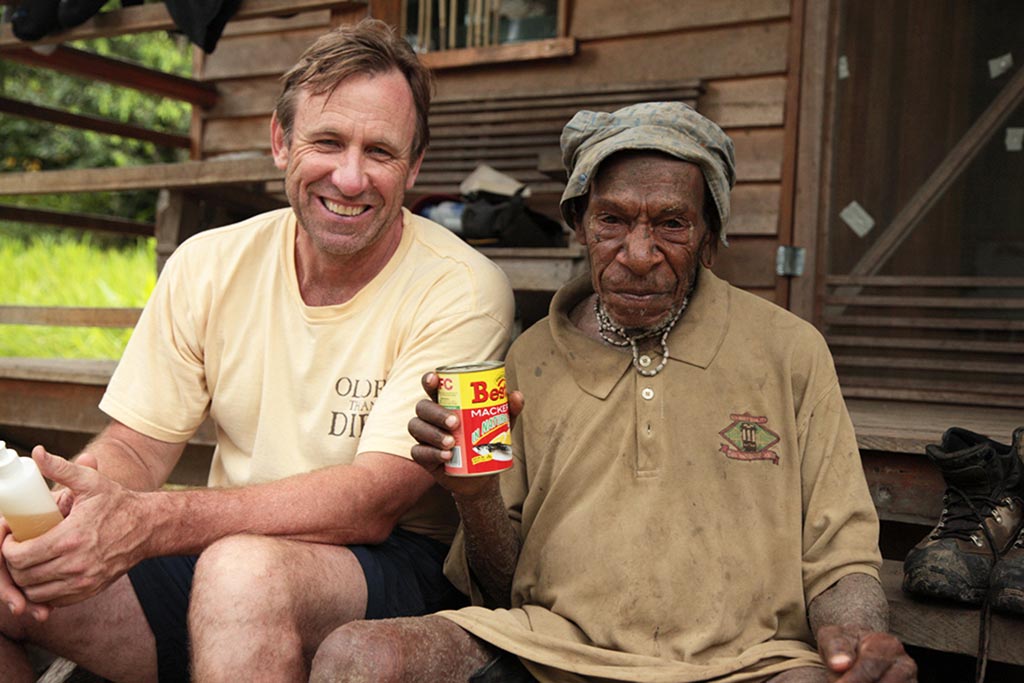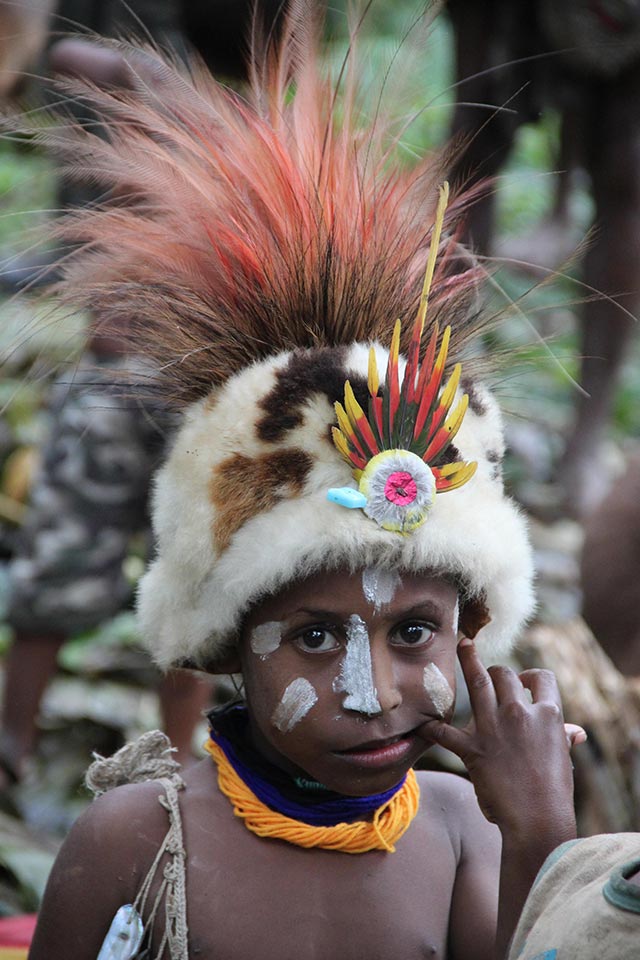
Preserving Our World
University researcher leads efforts to
protect Papua New Guinea forests and culture
Photos by William Thomas.
For nearly 30 years, William Thomas, a researcher and director of the New Jersey School of Conservation at Montclair State, has dedicated himself to protecting biodiversity in Papua New Guinea, particularly in its largely unexplored interior tropical forest, which is the greatest expanse of tropical forest in Oceania.
Thomas’ conservation efforts were rewarded this summer when he signed an agreement with Papua New Guinea’s Conservation and Environment Protection Authority and the Climate Change and Development Authority to formally designate 200,000 acres of forests as the largest conservation area in New Guinea.
“It is home to biodiversity that rivals that of the Amazon,” notes Thomas. “It’s one of the least explored regions on earth and part of the largest intact forest ecosystem in the Pacific.”
These forests – which stretch northward from Lake Kopiago – are globally important for carbon sequestration, biodiversity and watershed protection, he says.
“By establishing the Headwaters of the Strickland Conservation Area,” Thomas says, “Papua New Guinea will not only make an invaluable contribution to its conservation heritage, but it will also bring international recognition to this region.”
Preserving indigenous cultures
Today, Papua New Guinea is home to several thousand indigenous communities, including the Hewa, a nomadic community about 2,000 strong that was one of the last to come into contact with the outside world. “The Hewa are extremely remote, even by New Guinea standards,” says Thomas, who has worked with the Hewa since 1988 to conserve their homeland and their culture.
“While I’ve seen the adoption of clothing and metal tools, they have no villages, roads, police, government-funded schools or trade stores. Life for the Hewa community revolves around gardening, hunting and family,” says Thomas. He notes that although Hewa traditions generally remain strong today, in some instances they have been eroded to satisfy missionaries that have entered the region. While the Hewa have been accused of cannibalism by their neighbors, Thomas has never seen any evidence to support this claim.
“It is home to biodiversity that rivals that of the Amazon. It’s one of the least explored regions on Earth and part of the largest intact forest ecosystem in the Pacific.”
The Hewa, according to Thomas, live on the northern fringe of Papua New Guinea’s remote Central Highlands in scattered households separated by half-hour-long walks. Infertile soil means that the Hewa must change their gardens and their houses by moving frequently throughout their homeland, which is classified as a “major terrestrial unknown.”
Creating a baseline of local knowledge
As a conservationist and anthropologist, Thomas has long drawn on indigenous knowledge to develop effective means to conserve lands that are home not only to vibrant traditional cultures such as the Hewa’s, but also to unique flora and fauna. “I have worked with and been taught by generations of Hewa men, so I have developed a relationship and a level of trust with this community.”
While UNESCO has recognized Thomas’ success in creating a baseline of local environmental knowledge as a “Best Practices” in the use of indigenous knowledge, recording the information shared by the Hewa has presented its own set of challenges. According to Thomas, 1,000 of the world’s 5,000 languages are spoken in New Guinea. The Hewa alone speak five different dialects. “I speak some Hewa, but I do most of my work in Neo-Melanesian Pidgin that facilitates communication,” he explains.
A historic, new conservation area
Working with the Hewa community, Thomas has made significant advances in conservation since 2005, when they joined an international team of scientists and naturalists that discovered 50 new species – including many spiders and plants – in New Guinea’s largely unexplored Central Range.
They collaborated to develop the Papuan Forest Stewards initiative, which is dedicated to conserving the unique biological and cultural heritage of the Hewa. Their Field Guide to New Guinea Birds of the Hewa Territory is a textbook for the next generation of naturalists.

In 2015, with Thomas’ help, the Hewa began the process of creating the Headwaters of the Strickland Conservation Area – efforts that culminated in the historic agreement with Papua New Guinea’s Conservation and Environment Protection Authority and the Climate Change and Development Authority. The June 2016 agreement also supports the Papuan Forest Stewards as a model for the sustainable funding of conservation projects in Papua New Guinea.
“I didn’t know the area that I’d be living in was considered unexplored, but I ended up spending more time there than any westerner.”
Exploring the unexplored
Thomas first visited New Guinea in 1983. “When I returned to graduate school at the University of Arizona, the university had some money to investigate cannibalism accusations. Since I’d already been to New Guinea and they figured I could handle it, they gave me the money and I officially became an explorer,” he recalls. “I didn’t know the area that I’d be living in was considered unexplored, but I ended up spending more time there than any westerner.”

Thomas’ determined exploration of the ways in which indigenous peoples shape their tropical forest environment, along with his concerted efforts to conserve New Guinea’s rugged forests, have not gone unrecognized.
In 2012, Thomas received the prestigious Lowell Thomas Award from the Explorers Club of New York City for showing “an extraordinary capacity to transcend traditional comfort zones to undertake expeditions that benefit us all.”

“I received the Lowell Thomas Award at the same time as Sir David Attenborough – the father of the modern nature documentary and a giant in conservation,” Thomas recalls. “To be included with him in an award given to explorers by explorers is humbling.”
Thomas credits Montclair State with supporting every step of his explorations. “Bill Thomas is the embodiment of our programs in sustainability,” says Robert Prezant, dean of the College of Science and Mathematics. “In New Jersey there are few individuals as accomplished in successful, hands-on and significant sustainability programs.”
Thomas’ world-view is shaped by his passionate commitment to conserving wild places and the cultures of those who inhabit them. “Exploration in general has helped me gain patience and perseverance,” he says. “I’ve learned to appreciate its many challenges and to be thankful for the opportunities and experiences.”